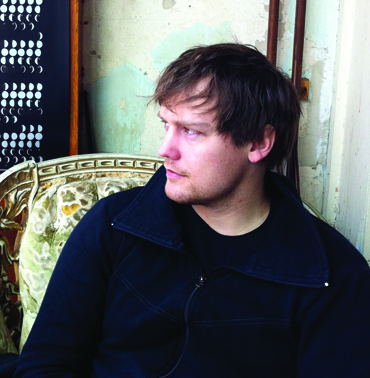Trio Orange edits With a little Help From AJA

Olivier BrironMONTREAL—Trio Orange handles end-to-end production of television programs from concept development to final edit. We work with newscasts, cultural, reality and game show programs. We’ve worked with some of Canada’s largest networks including Radio Canada, #ávasion, TVA, Télé Quebec, TVA Sport, and Casa.
To remain successful in the television’s deadline-driven world, we depend on a strong, technological workflow and have found that AJA equipment provides just that.
Our facility has 10 editing suites, which are all outfitted with AJA Kona cards for video I/O in Apple Final Cut Pro systems. We also use several AJA Hi5 mini-converters, along with an AJA Io HD portable video I/O device. In addition, we depend on anAJA FS1 universal converter and frame synchronizer to help us deal with and keep in step various flavors of video. AJA’s Ki Pro and Ki Pro Mini digital video recorders have become a regular part of our on-set camera workflow. We used them extensively for two travel shows that we recently worked on “Guide Resto Voir” and “Prêt à Partir.” The first of these is a standard multicamera program, and we employed six Ki Pros on set with a single operator. Four of these were directly linked with cameras to record isolated feeds. Another Ki Pro recorded scoreboard graphics, while the sixth machine was used for backup recording.
FACILITATING EDIT OPERATIONS
We moved footage directly from the Ki Pros into our SAN and from there to the edit suite. Separately, we used 10 AJA SDI-to-HDMI mini-converters to feed monitors around the set and for distributing signals to a number of monitors. We also used Kona cards for playback in our editing suites, and kept an Io HD at the ready to deal with any unexpected use that might come up. (The Io HD is a really convenient tool that can act as a capture card, playback or converter.)
I recently wrapped up another television special where we relied heavily on AJA Ki Pros for meeting a very tight shoot-to-air deadline. We recorded ISO feeds from 14 cameras individually onto Ki Pros with two additional Ki Pros on set for capturing a clean recording of the program and a secondary unit for back-up purposes. The footage went straight into the edit suite immediately following the performance. Everything was then transferred using the AJA KiStor Dock via Thunderbolt. The time we saved with this approach was absolutely essential.
Since incorporating Ki Pros into our workflow some three years ago, we’ve used them constantly—on almost every production in one capacity or another, whether it’s recording camera feeds or as a virtual VTR. In today’s multiformat television production world, AJA Ki Pro simplifies everything from capture to monitoring and editing—and speeding up our workflow in the process.
The professional video industry's #1 source for news, trends and product and tech information. Sign up below.
I’ve always used AJA gear and will continue to, because of the reliability and ease of use—most products nowadays have a steep learning curve. However, with AJA everything is always easy to get up and running and you can’t beat the performance.
